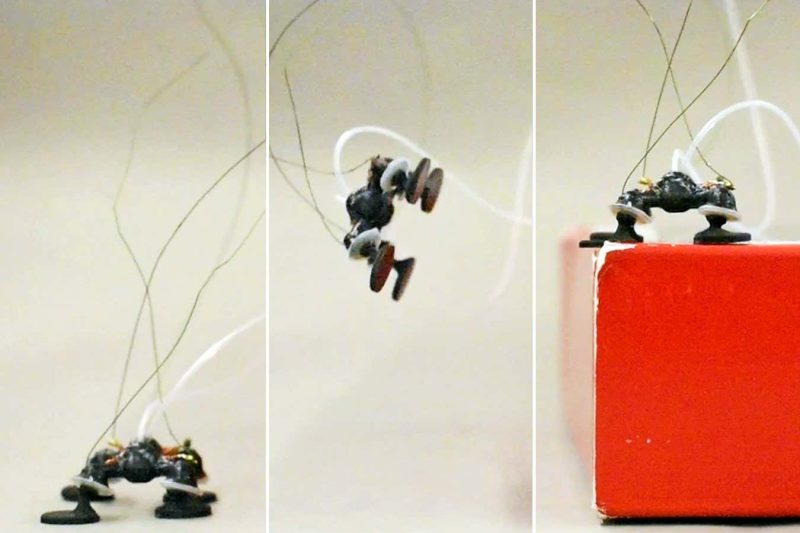Introduction
A team of researchers from Cornell University has developed a robot that is powered by miniature explosions. This robot can jump 20 times its own length and carry 22 times its own weight. The use of explosions as a power source allows for higher energy density and miniaturization, making it suitable for various applications such as search-and-rescue missions and space exploration.
The Power of Explosions
Typically, robots are powered by electric motors and batteries, but these technologies have limitations when it comes to miniaturization. To overcome this, the team at Cornell University turned to methane as a chemical fuel. Methane can store energy at a higher density than lithium-ion batteries and can be scaled down for insect-sized devices.
The researchers created an actuator with a 3D-printed combustion chamber that weighs only 325 milligrams. By igniting a mix of methane and oxygen using electrodes, each explosion produces a force of 9.5 newtons, which pushes against a flexible membrane. The membrane expands outward during each explosion and safely contains the gases, which are then vented as it contracts. With the ability to create up to 100 explosions per second, the actuator demonstrated durability in tests, surviving 750,000 successful firings over 8.5 hours.
A Jumping Robot
To showcase the capabilities of the actuator, the team created a four-legged prototype robot equipped with two combustion chambers. Each chamber is connected to a pair of expanding membranes attached to one foot. The fuel is supplied remotely via thin pipes. The tests revealed that the robot was capable of moving 22 times its own weight, indicating its potential for operating with onboard fuel in the future.
The robot measures 29 millimeters in length and weighs 1.6 grams. It can jump to a height of 56 centimeters and hop forwards 16 centimeters. Additionally, it can crawl or hop on various surfaces at speeds of up to 16.9 centimeters per second by rapidly triggering its actuators. Steering is achieved by triggering only one combustion chamber at a time, allowing the robot to move in either direction.
Potential Applications
The team believes that the ability to generate significant force on a small scale opens up various applications beyond robotics. These actuators could be useful in automated laboratory equipment, pumps, and other devices. However, one significant downside to powering robots with explosions is the noise they produce, limiting their use in close proximity to humans. Despite this drawback, the researchers believe that this technology could be valuable for search and rescue operations, as well as missions in austere and remote environments like space and underwater exploration.








